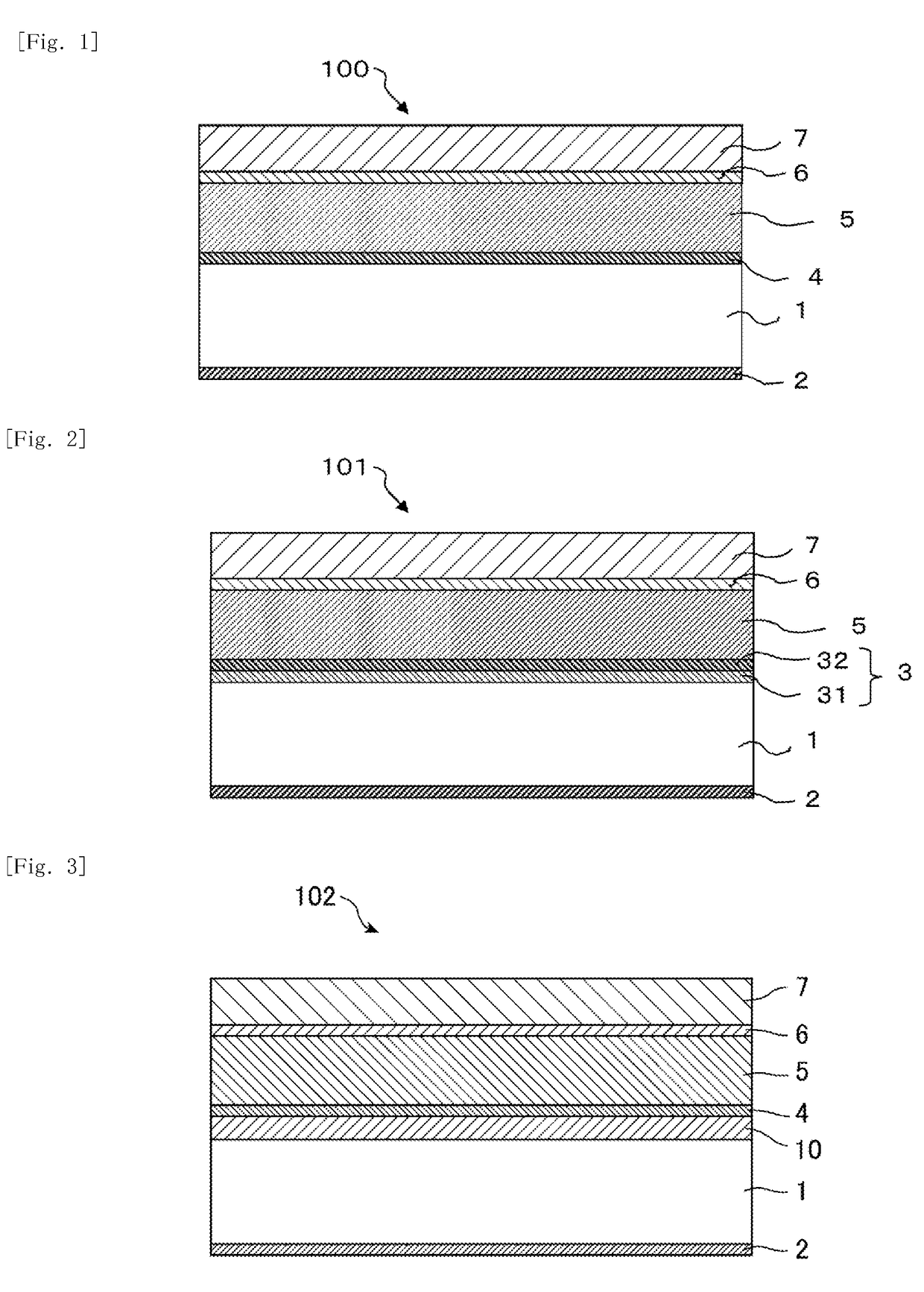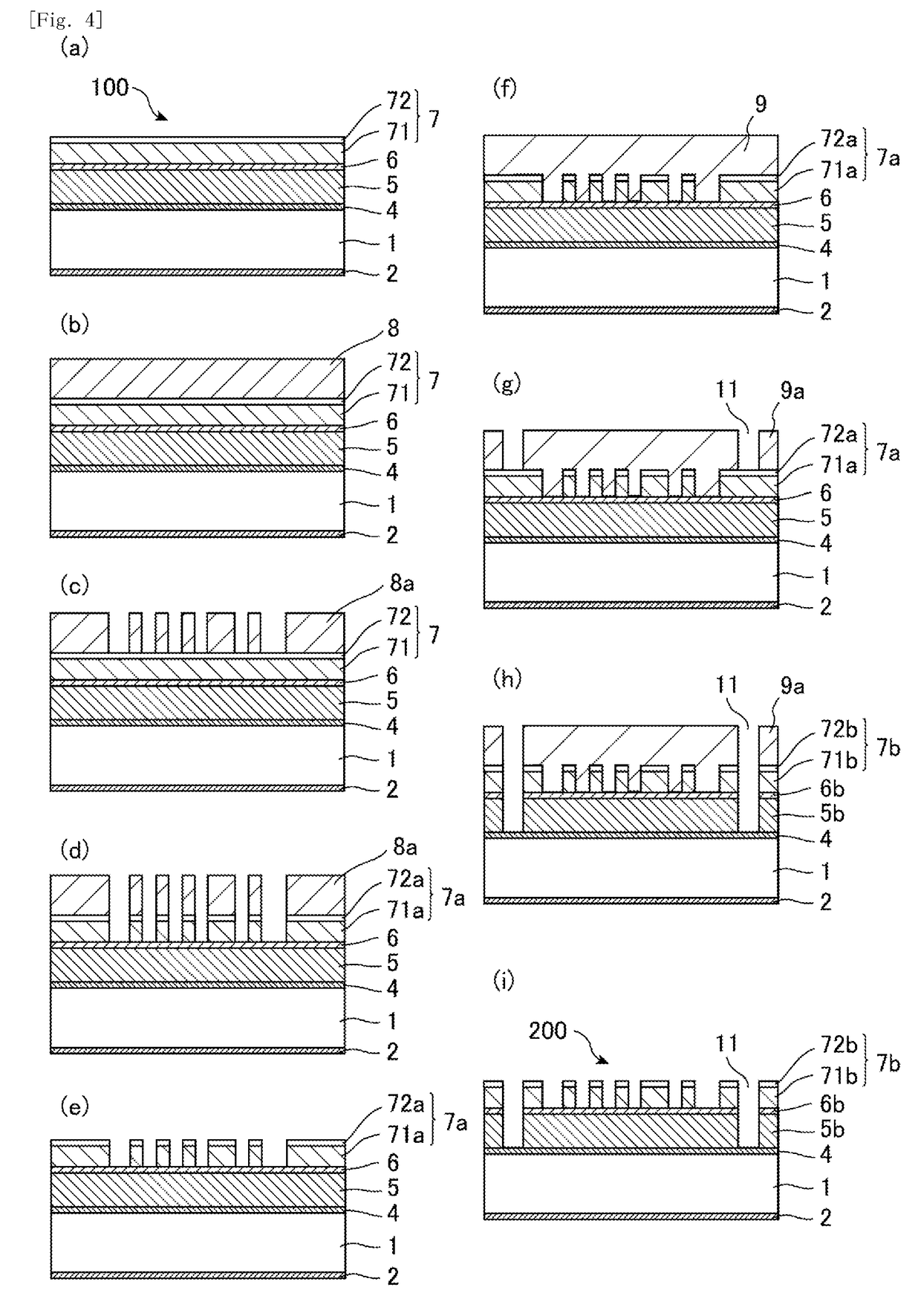Reflective mask blank, method for manufacturing same, reflective mask, method for manufacturing same, and method for manufacturing semiconductor device
a technology of reflective masks and masks, applied in the field of reflective masks, can solve the problems of reducing the precision of the transfer size, reducing the resolution, and leaking exposure light into the adjacent regions, so as to prevent charge-up, reduce the grain size, and high the effect of smoothness
- Summary
- Abstract
- Description
- Claims
- Application Information
AI Technical Summary
Benefits of technology
Problems solved by technology
Method used
Image
Examples
example 1
[0138]FIG. 4 shows a series of cross-sectional views schematically illustrating the primary steps in manufacturing an EUV lithography reflective mask 200 from an EUV lithography reflective mask blank 100.
[0139]As illustrated in FIG. 4(a), the reflective mask blank 100 according to Example 1 includes a rear surface conductive film 2, a substrate 1, a single-layer conductive underlying film 4, a multilayer reflective film 5, a protective film 6, and an absorber film 7. Here, the absorber film 7 is a two-layer film that includes a lower absorber film 71 made of TaBN and an upper absorber film 72 made of TaBO. First, the reflective mask blank itself will be described.
Reflective Mask Blank
Substrate
[0140]The substrate 1 was an SiO2—TiO2 low thermal expansion glass substrate having the 6025 size (approximately 152 mm×152 mm×6.35 mm) in which both the first principal surface and the second principal surface were polished. Here, the polishing process included a rough polishing step, a precis...
example 2
[0152]Example 2 is an example of a reflective mask blank in which the material used for the single-layer conductive underlying film 4 was changed from the Ta material used in Example 1 to TaN, the material used for the protective film 6 was changed from the Ru material used in Example 1 to RuTi, and the temperature of the annealing process conducted after the formation of the protective film 6 was changed from 130° C. used in Example 1 to 150° C. The rest of Example 2 was the same as Example 1, including the method of manufacturing the reflective mask and the method of manufacturing the semiconductor device.
[0153]In Example 2, a TaN material (Ta: 90 at. %, N: 10 at. %) with a film thickness of 5 nm was used for the conductive underlying film 4. This film was formed using a DC sputtering process using a Ta target in a mixed gas atmosphere of Ar gas and N2 gas. When the sheet resistance of a sample in which the steps up through the formation of the conductive underlying film 4 were co...
example 3
[0158]In Example 3, a reflective mask blank, a reflective mask, and a semiconductor device were manufactured by using the same configurations and the same methods as in Example 2, except that the order of filming of Si and Mo in the multilayer reflective film 5 was changed so that a Mo film is layered first.
[0159]Accordingly, in a similar manner as Example 2, in Example 3, the multilayer reflective film 5 was formed on the conductive underlying film 4. Here, the multilayer reflective film 5 was a Mo / Si cycle multilayer reflective film including a plurality of Mo and Si layers. By performing an ion beam sputtering process using a Mo target and a Si target in an Ar gas atmosphere, the multilayer reflective film 5 was formed by alternately layering a Mo layer and a Si layer onto the conductive underlying film 4. Here, the Mo and Si sputtering particles were sputtered at an angle of incidence of 30° relative to the normal to the principal surface of the substrate 1. First, a Mo film wit...
PUM
| Property | Measurement | Unit |
|---|---|---|
| thickness | aaaaa | aaaaa |
| angle of incidence | aaaaa | aaaaa |
| temperature | aaaaa | aaaaa |
Abstract
Description
Claims
Application Information
 Login to View More
Login to View More - R&D
- Intellectual Property
- Life Sciences
- Materials
- Tech Scout
- Unparalleled Data Quality
- Higher Quality Content
- 60% Fewer Hallucinations
Browse by: Latest US Patents, China's latest patents, Technical Efficacy Thesaurus, Application Domain, Technology Topic, Popular Technical Reports.
© 2025 PatSnap. All rights reserved.Legal|Privacy policy|Modern Slavery Act Transparency Statement|Sitemap|About US| Contact US: help@patsnap.com



